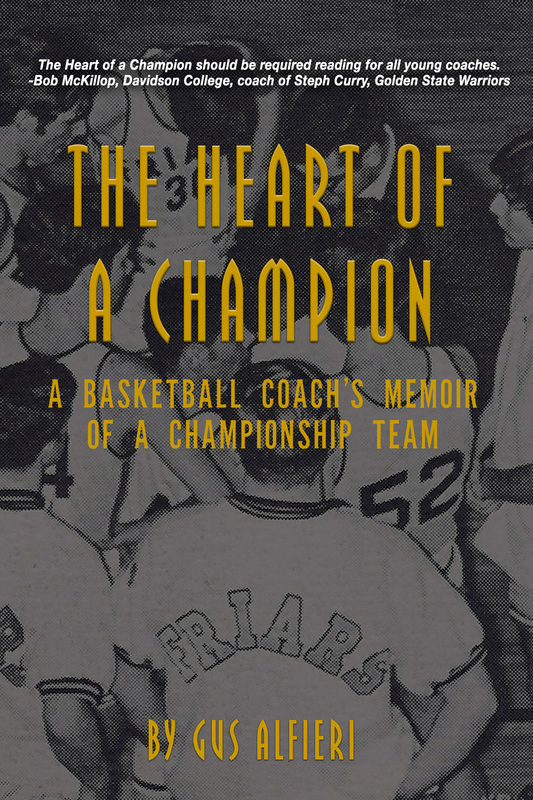|
Gus Alfieri still writes his own stuff – a rare accomplishment for any coach.
Alfieri won a championship as a college point guard and he coached a state high-school champion and he has, quite admirably, made himself into an author. Alfieri’s latest book, just in time for the season, is “The Heart of a Champion: A Basketball Coach’s Memoir of a Championship Team” – about the 1973-74 season when he took St. Anthony’s from South Huntington, Long Island, to the new (and technically unofficial) state championship. But the book could be about many coaches and many teams that jelled in that one magical year. Alfieri was a hard grader as a coach and he remains one as a writer. He describes moving into coaching on Long Island, which was just beginning to produce basketball talent in the early 1960’s: Larry Brown of Long Beach and Art Heyman of Oceanside, two strange birds from neighboring towns, took their personal animosity to North Carolina and Duke, respectively. But they were seen as anomalies. When Alfieri, a Brooklyn boy, began coaching out on Long Island, Lou Carnesecca, who had replaced Alfieri’s beloved Joe Lapchick at St. John’s, wondered out loud if they were still using a square ball out there. (I had the same smug feeling, as a Queens boy, when I worked at Newsday in the same period.) Alfieri describes a golden age way out there on the Island – Julius Erving and Mitch Kupchak and all the future coaches like Rick Pitino and Jim Valvano. He also recalls a coach or two he thought was weak and he remembers taking over at St. Anthony’s and feeling that some of his upperclassmen were holding back, possessive of their starting positions. Probably a few former players, well into middle age, will not be amused at Alfieri’s memories. But he built his own system, as coaches do, and he turned St. Anthony’s into a powerhouse. His role model, as always, is Joe Lapchick, the courtly and angular coach of the Knicks and St. John’s, who advised his players to “walk with kings.” That first book clearly a labor of love, glows with the presence of Lapchick, and this new book retains much of the old coach. As he coaches big games, Alfieri often refers to what Lapchick might do. In a tense locker room at the final game, a player asks to speak. Alfieri likes control, but his inner Lapchick guides him to let the senior address his teammates. Alfieri is a hard worker. For his Lapchick book, he found a former teammate who had been guilty of dumping games and, after many decades, he asked him “why?” In this new book, he does his homework and recreates the key plays in the rally over the very loaded Lutheran High. (There is also good stuff about the machinations in creating the tournament, by the wily administrator Jim Garvey.) But Alfieri’s work does not end with that championship and a subsequent state title. After coaching, he became a teacher, earned a doctorate, ran a basketball camp, and every November he organizes a charity luncheon, giving high-character awards to deserving coaches. I always love the stories by the female coaches, who built their own traditions with minimal budgets and maximum heart. This year’s award luncheon is Nov. 18 at the Wyndham New Yorker, across from Madison Square Garden. For information: http://www.characteraward.com/ Gus Alfieri will be speaking about his book at the wonderful Book Revue in Huntington, Long Island, on Oct. 18 at 7 PM. For information: http://bookrevue.com/GusAlfieri.htm My previous piece about Alfieri and his Lapchick book: http://www.georgevecsey.com/home/honoring-gus-alfieri-player-coach-writer For further information: www.gusalfieri.com.
Mike from Whitestone
10/12/2016 10:19:37 pm
Thanks, again, GV. 2/4/2017 01:55:44 am
Guys, Love to play online games, Visit the mentioned website to get access to live online xbox and the membership is free. There are many more offers from xbox, visit the website to grab them all. This is a real and working website which helps in playing online games over xbox. Comments are closed.
|
Categories
All
|










